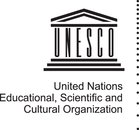

|
Understanding Extreme Geohazards: The Science of the Disaster Risk Management Cycle
European Science Foundation Conference
November 28 to December 1, 2011, Sant Feliu de Guixols, Spain
|


|

|
Declaration on Extreme Geohazards and the Reduction of Disaster Risks
Preamble
Geohazards such as earthquakes, landslides, volcano eruptions and associated tsunamis and floods cause large and increasing loss of lives and property. Most of these losses occur during high-impact, extreme events. The global and long-lasting societal and economic impacts of recent extreme events illustrate the scale of disasters that can be caused by geohazards, and remind us of the challenge of extreme events for disaster risk management. At the same time, the recent major geohazards causing disasters with global impacts are dwarfed by the largest geohazards that occurred during the last few millennia. The potential impact on our civilization of any such rare event tends to be ignored in planning of land use, infrastructure, and socio-economic processes. The recent extreme disasters revealed gaps in the knowledge of geohazards available to policy and decision making. Understanding the full spectrum of geohazards, including the extreme events, is a prerequisite for disaster risk management and increased global resilience to these events. Reducing the disasters induced by the occurrence of extreme hazards at an acceptable economic cost requires a solid scientific understanding of the hazards. The current understanding of high-impact geohazards and the challenges posed to the disaster risk management cycle were reviewed during the European Science Foundation (ESF) — European Cooperation in Science and Technology (COST) high level research conference on “Understanding Extreme Geohazards: The Science of the Disaster Risk Management Cycle,” held on November 27 — December 2, 2011 in Sant Feliu de Guixols, Spain.
The participants of this conference recognize the work done by the international geohazards community and, in addressing the needs identified in the declaration, intend to build on this work, in particular on the 2007 Frascati Declaration of the Third International Workshop on Geohazards; the Road Map of the Geohazards Community of Practice (GHCP) of the Group on Earth Observations (GEO) developed in 2010; and the progress made since then.
Recognizing that
- major research efforts have been made to understand the causes and processes of geohazards;
- significant advances have been achieved in our knowledge of the hazardous areas, and many measures required to prepare for, and adapt to, hazards have been developed;
- international programmes informing governments, decision makers, and the general public on disaster risks, and ways to reduce these risks, are being conducted;
Realizing that
- the loss of lives and properties through natural hazards, particularly geohazards, is rapidly increasing due to a growing population expanding into hazardous areas;
- the direct and indirect consequences of extreme events will likely increase as more population and infrastructure is put in harm's way and the interconnectivity of the global society increases;
- few options exist to reduce geohazards, but exposure and vulnerability can be reduced by properly choosing where to build and how, and by adapting existing buildings to potential hazards;
- proper planning of land use, particularly in rapidly growing urban areas, is key to risk reduction;
- the failure to significantly reduce the impacts of geohazards on society is partially due to a gap between science and research programmes and the communities in harms way; this gap also extends to many national, regional, and local decision makers;
- disaster risk reduction rarely happens in communities suffering from poverty, high levels of corruption, or opaque decision making;
- adaptation to geohazards is hampered by an inadequate and inaccurate perception of the risks and a lack of publicly available, and easy to understand, information;
- research in the traditional academic disciplines faces structural challenges that discourage research projects integrating the natural and social sciences, disaster management professionals and planners, and the community exposed to the hazards;
- in many regions, rules, laws, and legislation facilitating a safe built environment are either absent, or enforcement is hampered by organizational obstacles, including corruption;
- a large fraction of the death toll in disasters caused by geohazards is due to delayed or inefficient response and rescue;
Emphasizing the importance of the contributions of many international programmes and organizations, in particular that:
- the United Nations Educational, Scientific and Cultural Organization (UNESCO) aims to strengthen the role of science in disaster risk reduction through continued support of increasingly interdisciplinary international research projects which include capacity building for team members and science education for the affected communities;
- the Hyogo Framework for Action (2005-2015) facilitates the implementation of measures to increase the resilience of nations and communities to disasters;
- the Group on Earth Observations (GEO) aims to provide the monitoring required to understand the natural hazards and to detect hazardous events in a timely manner;
- the Geohazards Community of Practice of GEO is developing the building blocks informing the four phases of the risk management cycle; i.e., preparedness, early warning, response, and recovery;
- the United Nations Office for Project Services (UNOPS) is developing natural disaster management units blending research, monitoring, capacity building and education;
- the Integrated Research on Disaster Risk (IRDR) Scientific Programme of the International Council of Science (ICSU) co-sponsored by the International Social Sciences Council (ISSC) and the United Nations International Strategy for Disaster Reduction (UNISDR) is developing the scientific basis for risk reduction measures;
- several international scientific unions, including the International Geographical Union (IGU), the International Society for Photogrammetry and Remote Sensing (ISPRS), the International Union of Geodesy and Geophysics (IUGG), and the International Union of Geological Sciences (IUGS), promote basic research on geohazards, georisk, and sustainability via innovative multi- and trans-disciplinary research and outreach projects;
- the ESF has been facilitating a number of high level science conferences improving our understanding of the causes of disasters due to natural hazards;
We, the Participants of the ESF-COST High-Level Research Conference on “Understanding Extreme Geohazards: The Science of the Risk Management Cycle,” declare the need that
- a focused interdisciplinary research effort be made to increase our understanding of the nature of extreme geohazards and to improve our ability ro assess their potential locations, intensity, and recurrence;
- a sustained geohazard monitoring system be implemented to provide observations for research, detection of hazardous events, and in support of disaster prevention, response and recovery;
- data relevant to the monitoring and understanding of geohazards be shared freely in support of geohazard research and disaster risk reduction;
- interdisciplinary research programmes be developed which integrate the natural and social sciences to address all phases of the disaster risk management cycle;
- a dedicated outreach and education programme be developed to support a change in the citizens' and authorities' perception of the risks associated with major geohazards and to help recognize the challenges these hazards pose to society;
- organized efforts and resources be dedicated to education at the local level, particularly in developing countries, where community-based educational programs are effective ways to empower those in harms way to protect themselves from geohazards;
- information on geohazards be disseminated so that relevant governmental bodies and citizens can make informed and transparent decisions on where to build what and how, and where to reduce the vulnerability of existing buildings to future hazards;
- state-of-the-art products be developed to help policy makers developing legislation for risk reduction and planning for a safe built environment;
- preparedness and mitigation measures be tailored to specific local vulnerabilities, available resources, and social, cultural and religious constraints;
- international collaboration with local experts be fostered, to help regions with poorly developed governance mitigate disaster risks;
- low-technology response and rescue capabilities be improved, particularly in developing countries, so that disaster-impacted populations can be reached more rapidly;
- a community-based white paper, addressing the scientific and societal challenges of increasing disaster risk due to extreme geohazards, be prepared and distributed to funding agencies and governmental and intergovernmental bodies; and
- a process for an integrated assessment of disaster risk due to geohazards be established and the results of this assessment be articulated through an authoritative scientific body (like IPCC).
|